There can be your advertisement
300x150
Ring Houses: How Circular Apartments Emerged in Moscow
An unique experiment by Soviet architects that impresses
In Moscow, there are buildings that stand out from typical urban development not only because of their size or height but also due to their unusual shape. Among these, special attention is given to round houses, commonly known as "donut houses". These unique structures are nine-story panel buildings in the shape of a closed ring. Today, we will tell the story of their creation and explore why the experiment with circular homes did not continue.
How did the idea of building round houses come about?
The story of "donut houses" began in the early 1970s when young architect Eugen Stamo and engineer Alexander Markelov proposed an unconventional solution for typical panel housing. The project was developed in Workshop #3 of the Moscow Institute of Projects (Mosproekt-1) under Stamo's supervision, who had been involved in the reconstruction and mass development of Gagarin and Leningrad districts since 1961.
One version suggests that the idea of round houses was connected to preparations for the 1980 Olympics. The USSR submitted applications for hosting the Olympic Games multiple times since the 1960s, and the project authors proposed building five circular structures in Moscow that resembled Olympic rings when viewed from above.
However, some researchers consider this version a city legend. According to Sergei Tkachenko, former head of the Moscow General Plan Institute, the connection with the Olympics is unlikely — the first round house was built long before Moscow officially received the right to host the Olympic Games. Most likely, architects were simply looking for a way to create an architectural landmark in the area with minimal costs that would stand out among typical Soviet apartment buildings.
The First "Donut" on Nежинская Street
The first circular house was built in 1972 in the Ochakovo-Matveyevskoye area on the west side of Moscow at 13 Nежinская Street. This massive structure, with a diameter of 155 meters, has 26 entrances and accommodates 913 apartments.
Externally, the building indeed resembles a giant donut, which gave it its popular name. Inside the ring lies a spacious courtyard, whose area is comparable to a football pitch. Access to the courtyard can be made through arches leading from the street into the inner space.
What made the "donut house" special was not only its unusual form but also the layout of its apartments. Due to the circular structure, all rooms have a trapezoidal shape, with the outer wall being longer than the inner one. This creates certain difficulties in arranging furniture but also gives apartments an unconventional appearance.
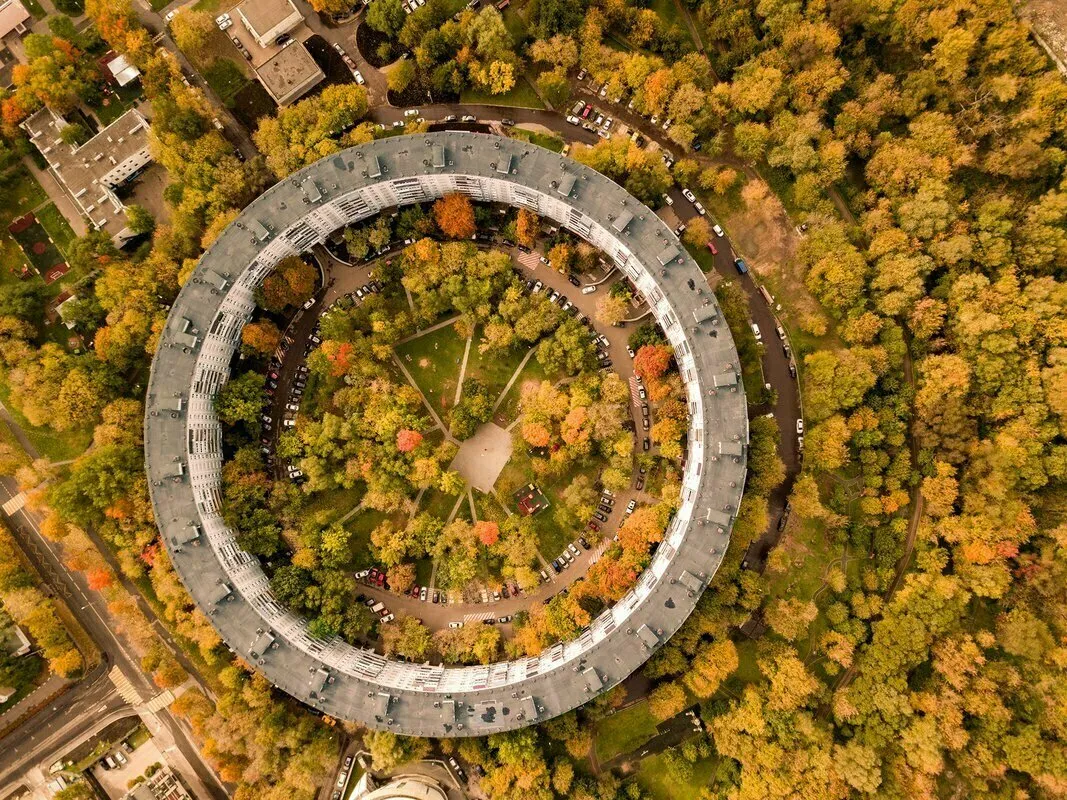 Photo from the website: tgstat.ru
Photo from the website: tgstat.ruThe Second Round House on Dovzhenko Street
The success of the first experiment led to the construction of a second round house. It was built in 1979, just one year before the start of the Olympics-80, in the Ramenki area at 6 Dovzhenko Street. This building is almost a perfect copy of its older brother on Nежinская Street, but it has even more apartments – 936.
The round house on Dovzhenko gained wide recognition due to its proximity to the Mosfilm studio, located literally across the road. It's no surprise that this building often appeared in Soviet films. You can see it in movies like "Courier," "Tragedy in Rock Style," "The Artist from Gribovo," and even the famous film "Moscow Does Not Believe in Tears" – in the final scenes of the movie, the illuminated windows of the round house are shown.
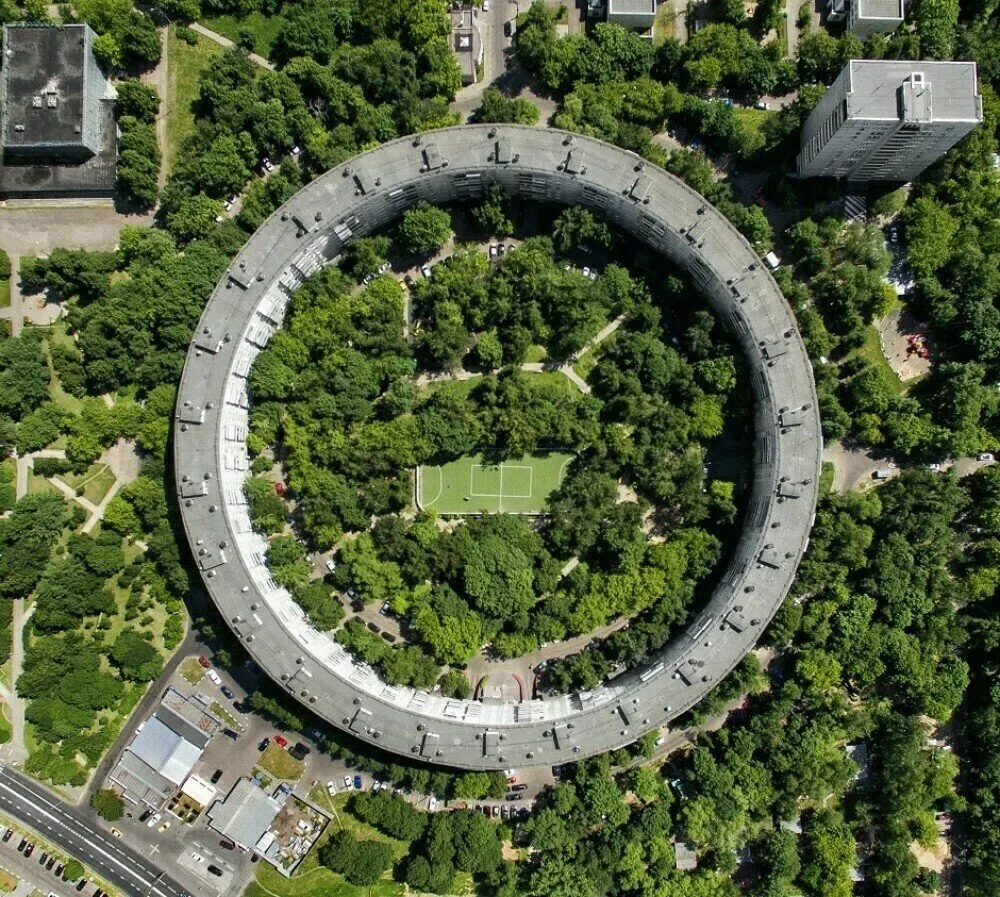 Photo from the website: welemudr.mirtesen.ru
Photo from the website: welemudr.mirtesen.ruConstruction Technical Details
How was it possible to build a panel house of such an unusual shape? To create the ring structure, architects used standard panels installed at a small angle to each other – with the maximum allowable deviation of six degrees according to norms at that time.
In places where the angle was too large for standard panels, monolithic inserts were used. Thus, the circular form of the house was achieved not by using special curved panels but through engineering ingenuity – ordinary straight panels were assembled so that they would form a ring in the end.
Why Did the Experiment Not Continue?
Despite grand plans to build five circular "rings" of homes, the project was stopped after only two buildings were completed. What caused the decision to abandon further construction?
The main issue was economic inefficiency. Round houses required more land than rectangular buildings with the same living area. Moreover, construction was more complex and expensive due to the need for monolithic inserts and installing panels at an angle.
Another disadvantage was uneven access to sunlight in apartments. In some rooms, especially those facing the inner courtyard, there wasn’t enough natural light. Additionally, the unique acoustics of the round courtyard created a "whisper gallery" effect – sounds from one balcony could be clearly heard on the opposite side of the house.
Residents of these houses also note privacy issues – due to the circular shape, adjacent balconies are easily visible. Finding the right entrance in a uniform ring of 26 sections for guests can be quite a challenge.
The Legacy of Round Houses
Although mass construction of round houses never happened, the two existing "donut" buildings have become true architectural landmarks in Moscow. They attract attention from tourists, architects, and simply lovers of unusual buildings.
Interestingly, more than half a century after the construction of the first round house in Moscow, similar concepts began appearing in modern architecture around the world. The most well-known example is Apple's new headquarters in California, which also has a ring shape, albeit in a much more high-tech design.
Donut houses in Moscow are a unique experiment by Soviet architects that, although not becoming a mass phenomenon, have forever become part of the history of Moscow’s architecture. These buildings remind us of an era when even in conditions of typical construction, architects sought to create unconventional and memorable forms.
When visiting the western part of Moscow, be sure to visit Nежinская Street or Dovzhenko Street to see these famous circular houses with your own eyes. Even better – climb up to a viewing platform or observe them from space, as that is how the architects' vision truly unfolds.
Photo cover from the website: umcistra.ru
More articles:
 Bright Kitchen with Emerald Apron in 69 m² Trash Apartment
Bright Kitchen with Emerald Apron in 69 m² Trash Apartment How to Create an Effortless 3 m² Bathroom with Green Ceiling and Marble Tile
How to Create an Effortless 3 m² Bathroom with Green Ceiling and Marble Tile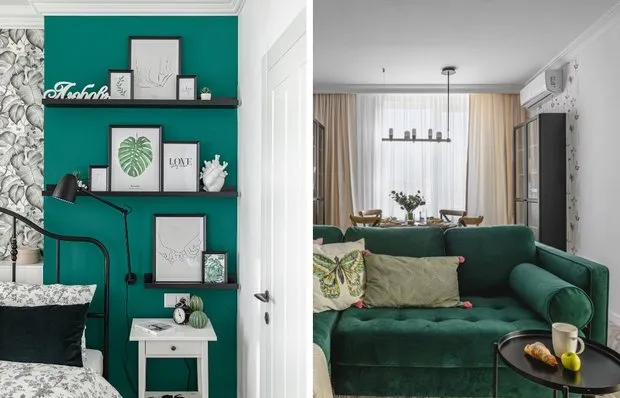 6 Tips We Spotted in a Stylish 69 m² Apartment
6 Tips We Spotted in a Stylish 69 m² Apartment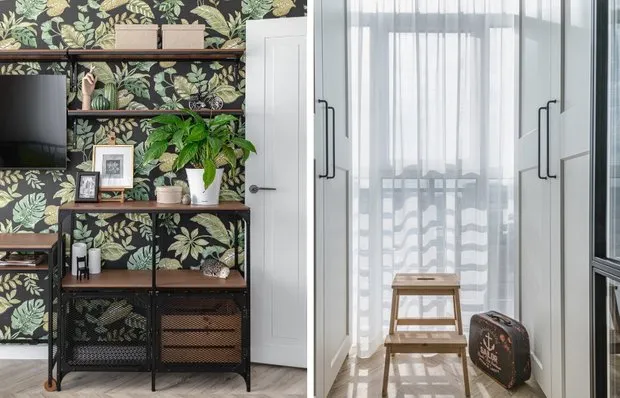 How They Organized Storage in a 69 m² Trash Space: 5 Ideas You Can Replicate Too
How They Organized Storage in a 69 m² Trash Space: 5 Ideas You Can Replicate Too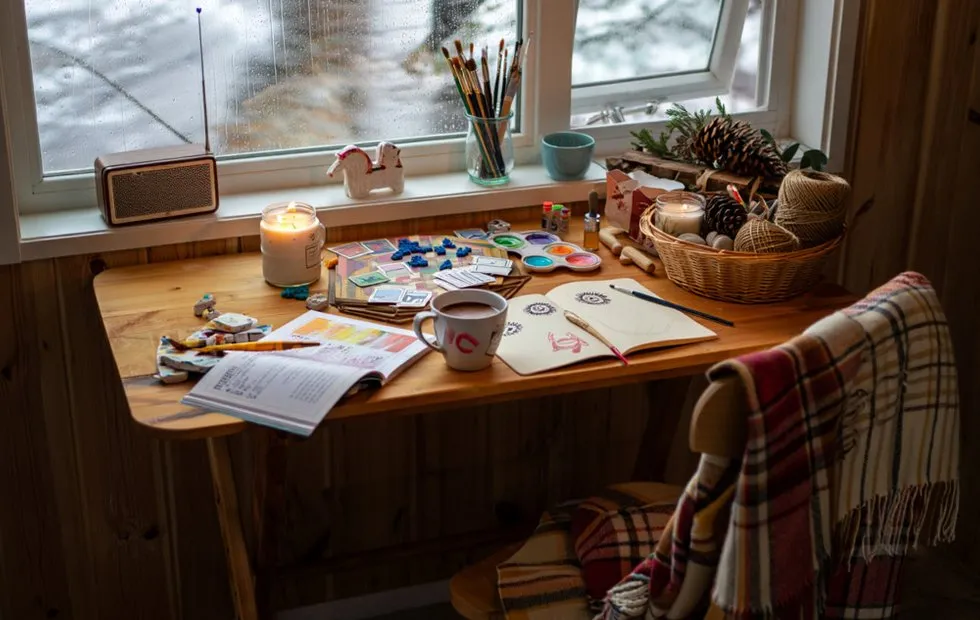 Rainy Weekend at the Cottage: 15 Activities That Will Save You from Boredom
Rainy Weekend at the Cottage: 15 Activities That Will Save You from Boredom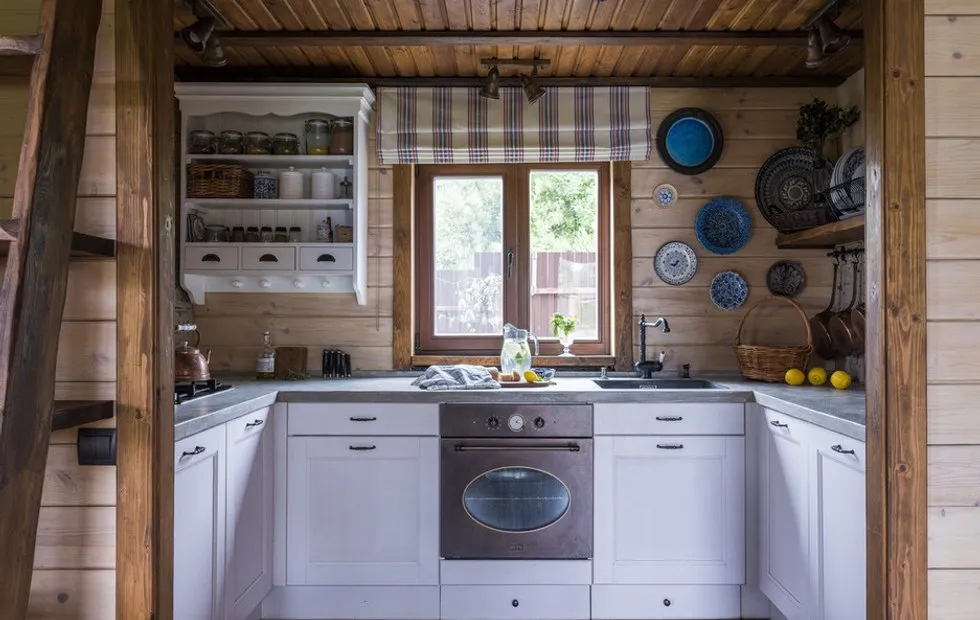 Family of 4 lives in a 36 sq. m house: how to accommodate everyone without losing your mind
Family of 4 lives in a 36 sq. m house: how to accommodate everyone without losing your mind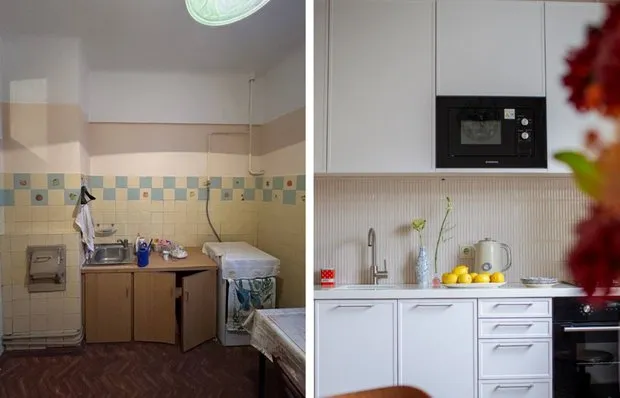 Before/After: From a Gloomy Stalin-era Apartment to a Cozy, Bright Interior
Before/After: From a Gloomy Stalin-era Apartment to a Cozy, Bright Interior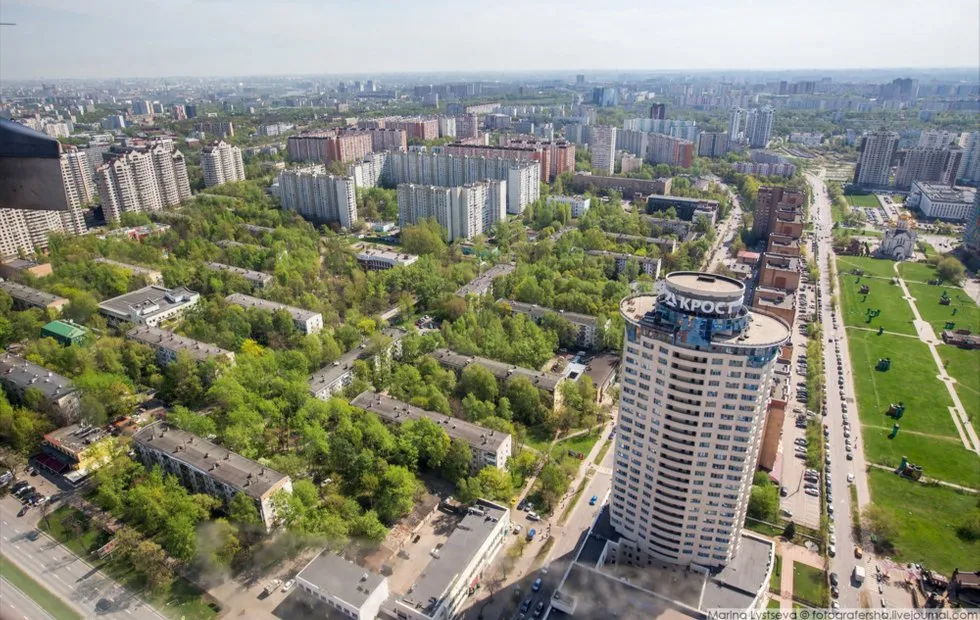 Cheremushki: Where Did This Cute Name Come From and What Does It Have to Do with Khrushchev Experiments?
Cheremushki: Where Did This Cute Name Come From and What Does It Have to Do with Khrushchev Experiments?